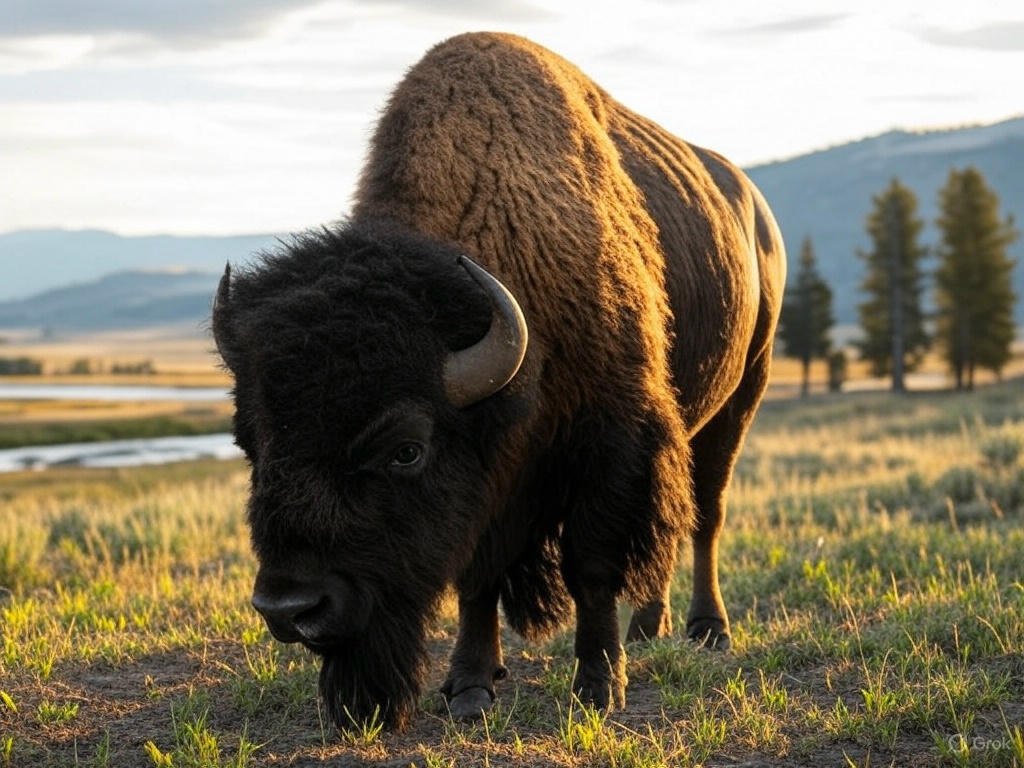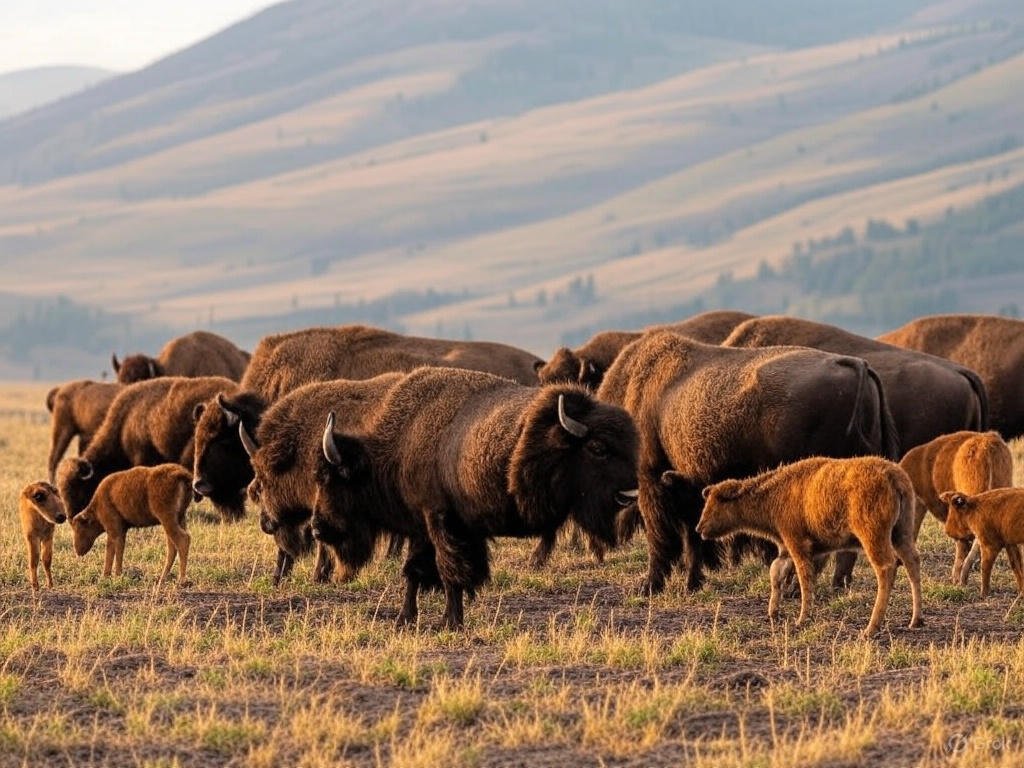Yellowstone bison, one of the last genetically pure herds, embody both ecological vitality and cultural heritage, yet their future is tied to the yellowstone bison herd lawsuit. Roaming the vast plains of Yellowstone National Park, these majestic creatures symbolize the untamed spirit of the American West. For Native American tribes, bison are sacred relatives, woven into spiritual and sustenance practices. Ecologically, they are architects of the landscape, shaping grasslands and supporting biodiversity. The 2024 Bison Management Plan, with its focus on tribal relocation, offers hope for their revival, but legal battles threaten progress. This article explores the ecological role of bison in Yellowstone, their profound cultural significance, and the conservation efforts shaping their legacy. Join us as we uncover why Yellowstone bison remain a cornerstone of America’s natural and cultural heritage.
Ecological Role: Bison as Keystone Species
Yellowstone bison are keystone species, wielding an outsized influence on the park’s ecosystem. Through grazing, they sculpt the grasslands, promoting plant diversity that sustains species from pollinators to pronghorn. Their heavy hooves churn soil, dispersing seeds and fostering nutrient cycling, a process vital to habitat health. Recent studies, dubbed the “yellowstone national park bison herbivore discovery,” reveal that bison grazing patterns enhance carbon sequestration, bolstering ecosystem resilience against climate change. With a population fluctuating between 5,000 and 10,000 in 2024, bison in Yellowstone drive ecological balance but require careful management to prevent overgrazing. The 2024 Bison Management Plan, detailed in our article on The Yellowstone Bison Management Plan: What’s at Stake?, aims to sustain these benefits by balancing herd size with habitat capacity. Yellowstone’s bison are not just survivors—they are ecological stewards.

Cultural Significance: Bison in Native American Heritage
For tribes like the Lakota, Cheyenne, and Assiniboine, Yellowstone bison are more than wildlife—they are relatives, central to spiritual, cultural, and sustenance traditions. “Bison are our relatives, central to our culture and survival,” says a Fort Peck Tribal Leader. Historically, bison provided food, clothing, and tools, but their near-extinction in the 19th century devastated tribal communities, severing cultural lifelines. Today, yellowstone bison cultural significance fuels a revival. The 2024 birth of a white bison calf, a sacred symbol, sparked renewed hope, as explored in our post on The Significance of the White Bison Calf Born in Yellowstone. Tribal relocation programs, such as those at Fort Peck, restore bison to reservation lands, fostering food sovereignty and cultural reconnection. These efforts, supported by the 2024 Bison Management Plan, empower tribes to reclaim their heritage, ensuring american bison Yellowstone National Park remain a living legacy.
Alt text: Tribal bison relocation in Fort Peck from Yellowstone.
Historical Importance
The decimation of bison herds in the 1800s was a cultural catastrophe for Native American tribes, disrupting ceremonies and economies. Their decline mirrored the erosion of tribal autonomy.
Modern Revival
Tribal-led restoration, including yellowstone bison tribal relocation, is rebuilding cultural ties. Fort Peck’s program, for instance, integrates bison into education and ceremonies, reviving ancestral practices.
Pull-quote: Yellowstone bison shape ecosystems and tribal heritage, but their future hinges on conservation.
Conservation and Challenges: Protecting Yellowstone’s Bison
Yellowstone bison are a conservation priority due to their genetic purity, free from cattle hybridization—a rarity that answers the question, “are the bison in yellowstone pure?” The 2024 Bison Management Plan supports yellowstone bison conservation by reducing culling and expanding tribal relocation, aiming to sustain a robust herd. Yet, challenges persist. Brucellosis concerns, migration into private lands, and culling practices spark conflicts, fueling the yellowstone bison herd lawsuit. This legal battle, detailed in our cornerstone article on the Yellowstone Bison Herd Lawsuit – Legal Battle, could reinstate stricter population controls, undermining conservation gains. The plan’s strategies, explored in The Yellowstone Bison Management Plan: What’s at Stake?, balance ecological needs with cultural priorities, but the lawsuit’s outcome remains a wildcard. Protecting yellowstone bison genetics and their ecological role demands innovative solutions and public support.
Conclusion: A Legacy Worth Preserving
Yellowstone bison are ecological stewards and cultural touchstones, their legacy intertwined with the grasslands they shape and the tribes they sustain. The yellowstone bison revival hinges on conservation efforts like the 2024 Bison Management Plan, yet the yellowstone bison herd lawsuit threatens to derail progress. Stay informed by exploring the legal details in our Yellowstone Bison Herd Lawsuit – Legal Battle article. Visitors can support preservation by respecting wildlife and learning about bison’s significance. Dive into the sacred story of the white bison in The Significance of the White Bison Calf Born in Yellowstone or share your thoughts on bison conservation in the comments below. Together, we can champion the enduring legacy of yellowstone bison—a symbol of resilience and heritage worth preserving.

Felipe M Bastian is a seasoned wildlife conservation expert with a deep focus on Yellowstone National Park’s bison herd and its ecological, cultural, and legal complexities. With over a decade of experience in environmental policy and wildlife management, Felipe has worked closely with park authorities, tribal communities, and conservation organizations to advocate for sustainable bison management practices. His insights into the Yellowstone Bison Management Plan lawsuit, tribal relocation efforts, and bison safety protocols stem from extensive field research and collaboration with stakeholders. Felipe’s writing combines scientific rigor with accessible storytelling, making him a trusted voice on Yellowstone’s iconic species. He holds a Master’s degree in Wildlife Biology and is passionate about preserving the ecological and cultural legacy of bison for future generations.



